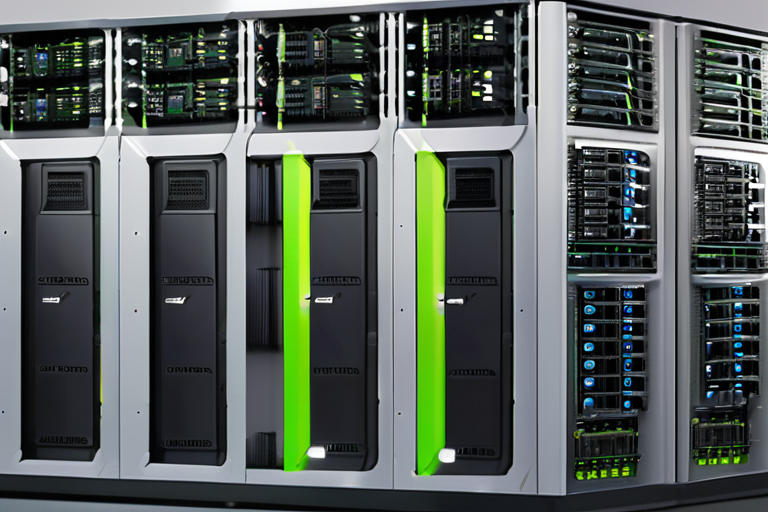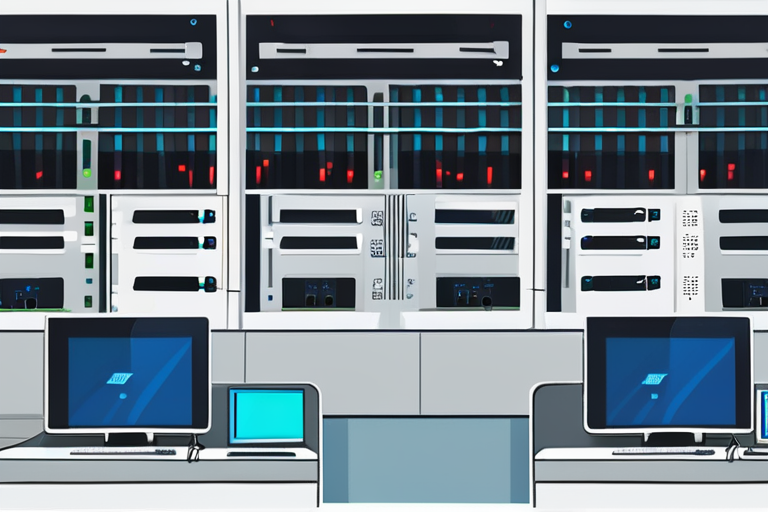Meta and Oracle Choose NVIDIA Spectrum-X for AI Data Centres
In a significant move to upgrade their artificial intelligence (AI) data centres, Meta and Oracle have chosen NVIDIA's Spectrum-X Ethernet networking switches technology. This decision is aimed at addressing the growing demands of large-scale AI systems, which are transforming data centres into "giga-scale AI factories," according to Jensen Huang, NVIDIA's founder and CEO.
The adoption of Spectrum-X by both companies is part of an open networking framework designed to improve AI training efficiency and accelerate deployment across massive compute clusters. Oracle plans to use Spectrum-X Ethernet with its Vera Rubin architecture to build large-scale AI factories, allowing the company to connect millions of GPUs more efficiently. This will enable customers to train and deploy new AI models faster.
"We are witnessing a fundamental shift in how data centres operate," said Jensen Huang. "Trillion-parameter models are transforming data centres into giga-scale AI factories, and Spectrum-X acts as the nervous system connecting millions of GPUs to train the largest models ever built."
Meta's decision to adopt NVIDIA's technology is part of its ongoing efforts to improve AI training efficiency and reduce costs. The company has been investing heavily in AI research and development, with a focus on developing more efficient and scalable AI systems.
The adoption of Spectrum-X by Meta and Oracle marks a significant step towards the widespread adoption of open networking frameworks in AI data centres. This technology is expected to play a crucial role in enabling the growth of large-scale AI systems, which are poised to have a profound impact on various industries, including healthcare, finance, and education.
The use of Spectrum-X will also enable both companies to better manage their massive compute clusters, reducing latency and improving overall system performance. This is particularly important for applications that require real-time processing, such as natural language processing and computer vision.
As the demand for AI continues to grow, the need for efficient and scalable data centre infrastructure becomes increasingly critical. The adoption of NVIDIA's Spectrum-X technology by Meta and Oracle is a significant development in this space, and it will be interesting to see how other companies follow suit.
Background and Context
The use of large-scale AI systems has become increasingly prevalent in recent years, with applications ranging from natural language processing and computer vision to predictive maintenance and autonomous vehicles. However, these systems require massive amounts of computational power, which can lead to significant energy consumption and costs.
To address this challenge, companies like Meta and Oracle are turning to open networking frameworks, such as NVIDIA's Spectrum-X technology. These frameworks enable the efficient management of massive compute clusters, reducing latency and improving overall system performance.
Additional Perspectives
The adoption of NVIDIA's Spectrum-X technology by Meta and Oracle is a significant development in the AI space, with implications for various industries and applications. As the demand for AI continues to grow, the need for efficient and scalable data centre infrastructure becomes increasingly critical.
"We are excited to see companies like Meta and Oracle adopting our Spectrum-X technology," said Jensen Huang. "This is a major step towards enabling the growth of large-scale AI systems, which will have a profound impact on various industries."
Current Status and Next Developments
The adoption of NVIDIA's Spectrum-X technology by Meta and Oracle marks a significant step towards the widespread adoption of open networking frameworks in AI data centres. As the demand for AI continues to grow, it is likely that other companies will follow suit, adopting similar technologies to improve their AI training efficiency and reduce costs.
In conclusion, the decision by Meta and Oracle to adopt NVIDIA's Spectrum-X technology is a significant development in the AI space, with implications for various industries and applications. As the demand for AI continues to grow, the need for efficient and scalable data centre infrastructure becomes increasingly critical.
*Reporting by Artificialintelligence-news.*



 Hoppi
Hoppi

 Hoppi
Hoppi

 Hoppi
Hoppi

 Hoppi
Hoppi

 Hoppi
Hoppi

 Hoppi
Hoppi











